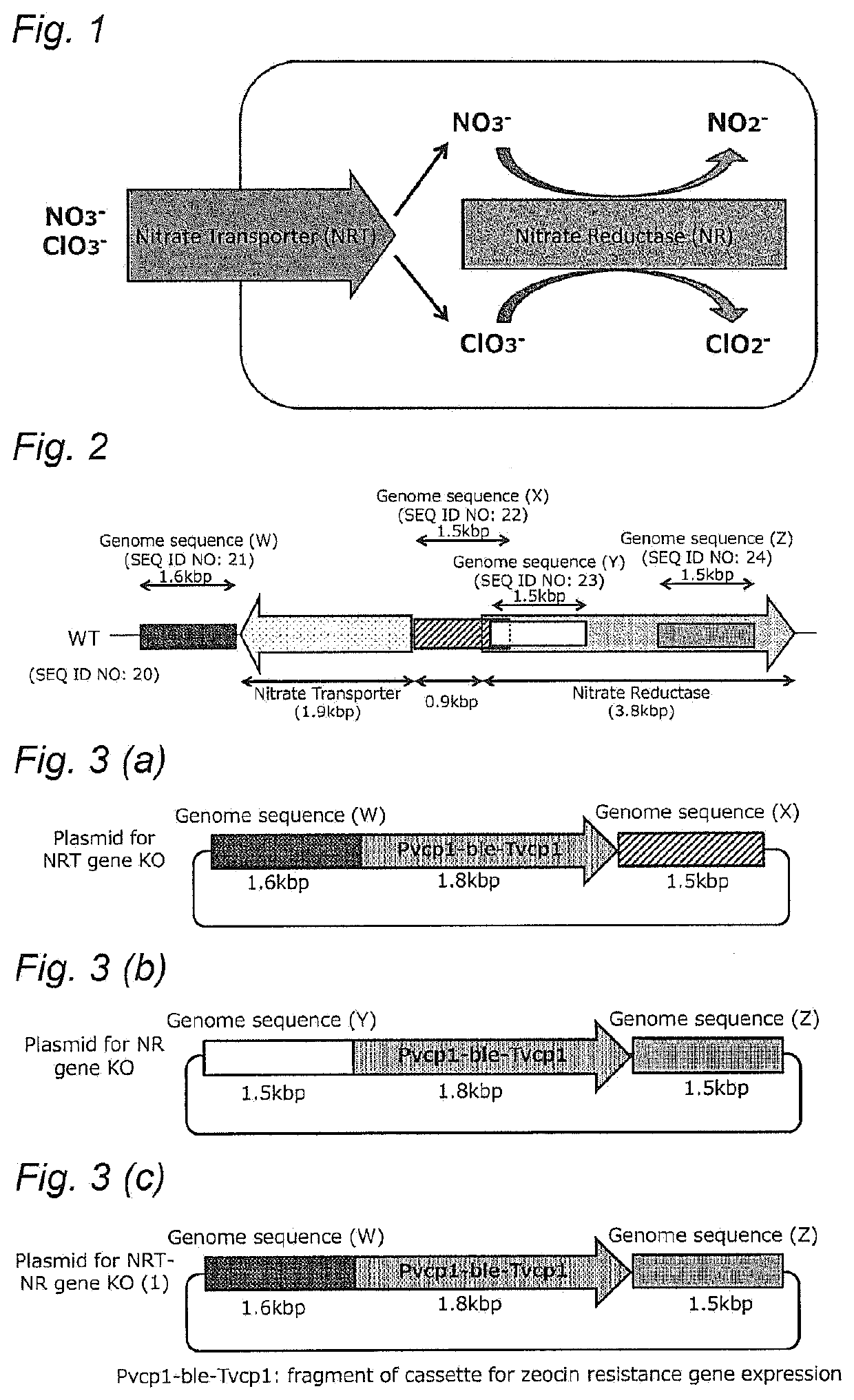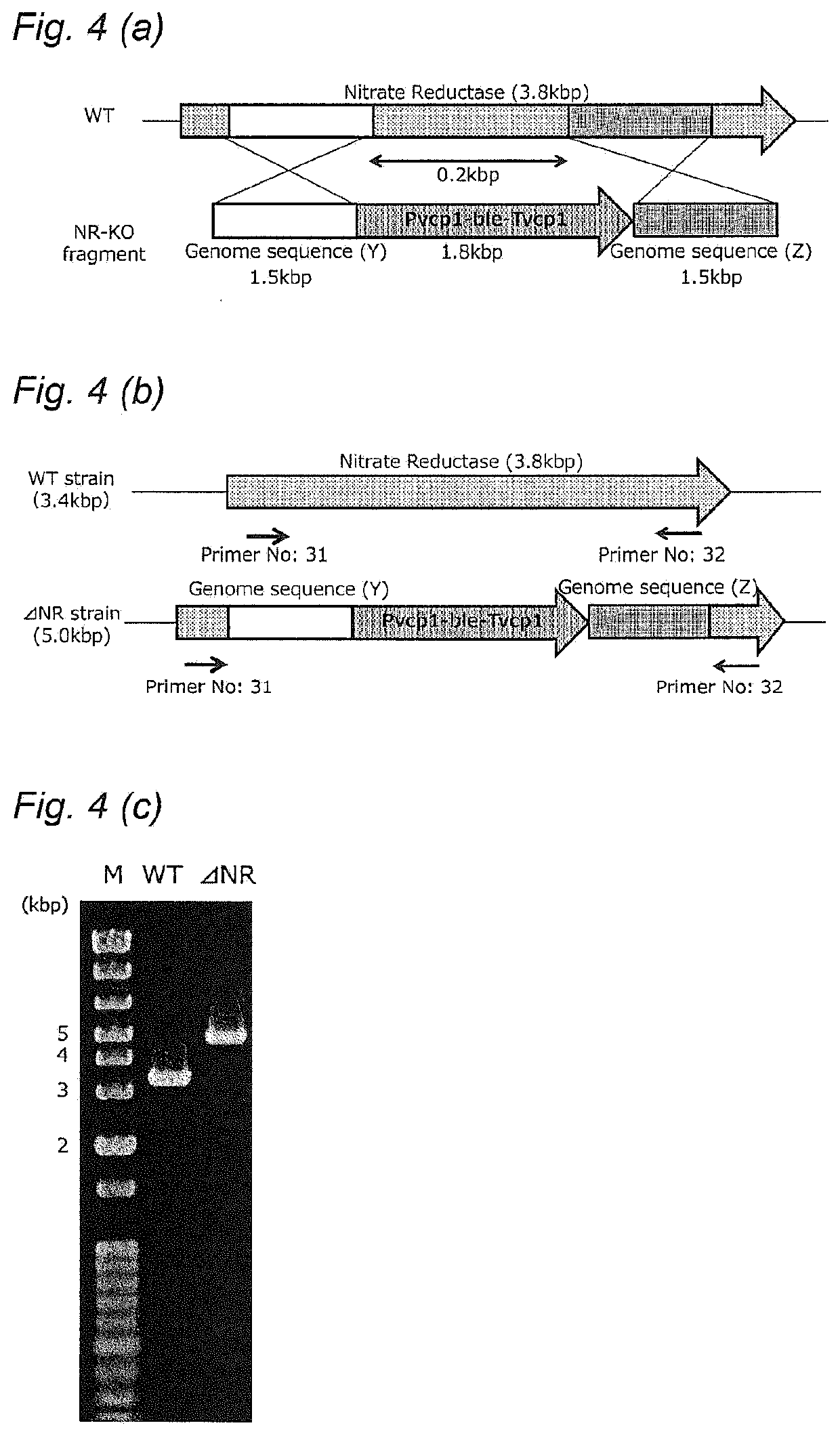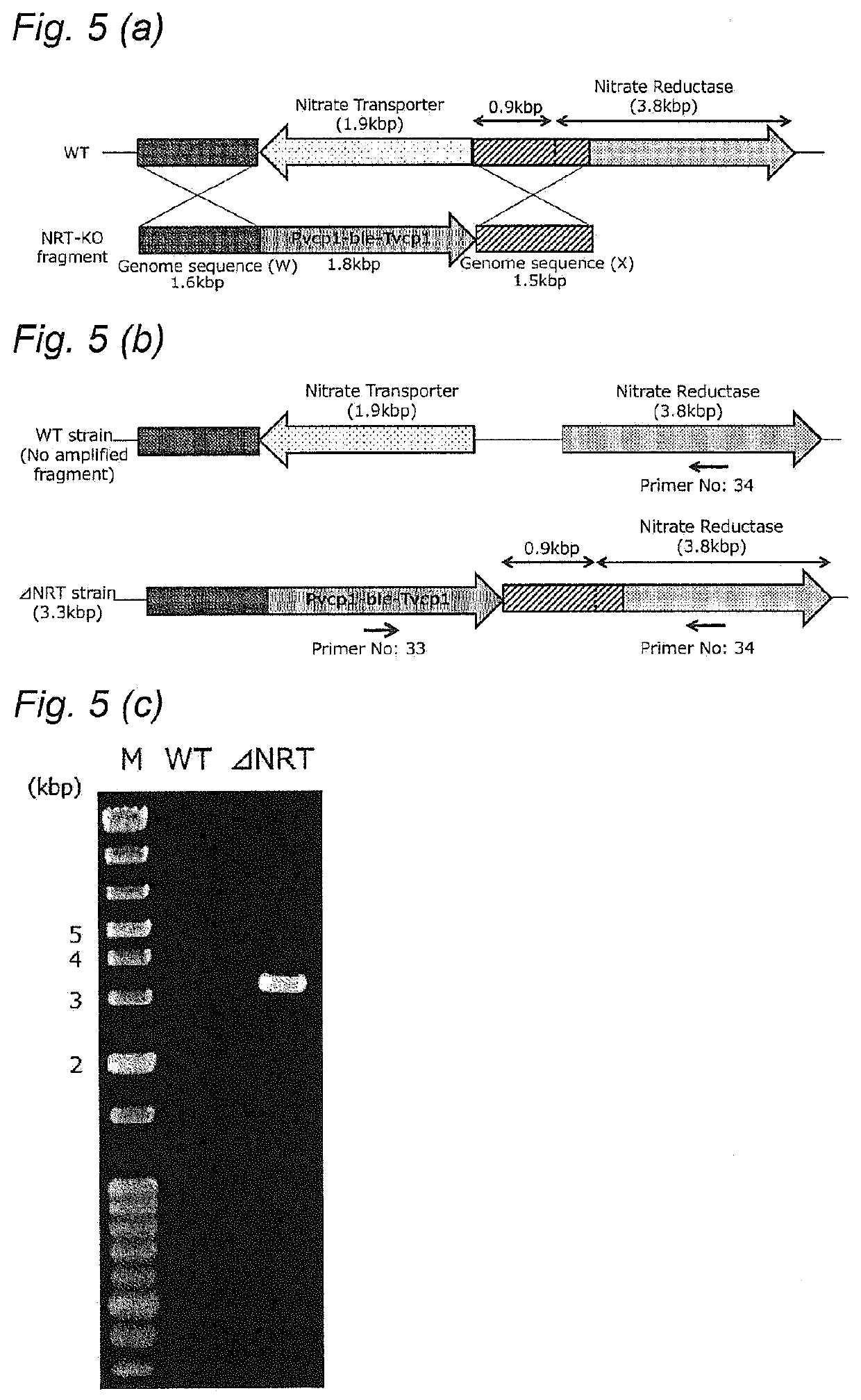Method of Improving Resistance to Substrate Analog of Nitric Acid in Microalga
a technology of nitric acid and substrate analog, which is applied in the field of improving the resistance of a substrate analog of nitric acid in a microalga, can solve the problems of difficult to avoid the growth of non-targeted microorganisms owing to contamination arising after the treatment, increased energy and equipment required for sterilization or germicidal treatment of culture medium and the like, and high risk of contamination
- Summary
- Abstract
- Description
- Claims
- Application Information
AI Technical Summary
Benefits of technology
Problems solved by technology
Method used
Image
Examples
first embodiment
[0048]In the present invention, an NRT gene on the genome of a specific microalga is deleted. Alternatively, expression of the NRT gene encoded in the genome of the specific microalga is downregulated. The NRT gene described later is deleted or expression thereof is downregulated in the specific microalga, whereby resistance to the substrate analog of nitric acid, preferably chloric acid resistance, influencing viability of the microalga, is improved. The transformant of the present invention can also be selected using improved resistance to the substrate analog of nitric acid (preferably chloric acid resistance) as an indicator.
[0049]Further, as mentioned above, a chlorite ion formed by reduction of a chlorate ion by nitrogen metabolism exhibits high toxicity to ordinary microorganisms. However, the transformant of the present invention has high resistance to chloric acid. Therefore, when the transformant of the present invention is cultured in a chloric acid-containing medium, con...
second embodiment
[0063]In the present invention, in addition to the above-mentioned NRT gene, the NR gene is also deleted or expression thereof is downregulated. These genes are deleted or expression thereof is downregulated, whereby the resistance to the substrate analog of nitric acid is further improved. Therefore, the obtained transformant can grow even under conditions containing the substrate analog of nitric acid, preferably chloric acid with a higher concentration. Accordingly, the transformant of the present invention can be selected using the resistance to the substrate analog of nitric acid (preferably chloric acid resistance) as the indicator. Here, the term “NR” herein means an enzyme which reduces nitrate ion to form nitrite ion. Moreover, the NR reduces chlorate ion as the substrate analog of nitrate ion to form chlorite ion.
[0064]As termed in the present specification “NR gene” means not only gene including DNA formed of the nucleotide sequence in the region encoding NR but also DNA ...
example 1
Providing Chioric Acid Resistance for Nannochloropsis Oculata
(1) Construction of Plasmid for Zeocin Resistance Gene Expression
[0103]A zeocin resistance gene (SEQ ID NO: 1) was artificially synthesized. Using the thus-synthesized DNA fragments as a template, and a pair of the primer Nos. 2 and 3 shown in Table 1, PCR was carried out, to amplify the zeocin resistance gene.
[0104]Further, using a genome of Nannochloropsis oculata strain NIES-2145 (obtained from National Institute for Environmental Studies (NIES)) as a template, and a pair of the primer Nos. 4 and 5, and a pair of the primer Nos. 6 and 7 shown in Table 1, respectively, PCRs were carried out to amplify the VCP1 promoter sequence (SEQ ID NO: 8) and the VCP1 terminator sequence (SEQ ID NO: 9).
[0105]Furthermore, using a plasmid vector pUC118 (manufactured by Takara Bio) as a template, and a pair of the primer Nos. 10 and 11 shown in Table 1, PCR was carried out to amplify the plasmid vector pUC118.
[0106]The thus-obtained fo...
PUM
| Property | Measurement | Unit |
|---|---|---|
| pH | aaaaa | aaaaa |
| concentration | aaaaa | aaaaa |
| concentration | aaaaa | aaaaa |
Abstract
Description
Claims
Application Information
 Login to View More
Login to View More - R&D
- Intellectual Property
- Life Sciences
- Materials
- Tech Scout
- Unparalleled Data Quality
- Higher Quality Content
- 60% Fewer Hallucinations
Browse by: Latest US Patents, China's latest patents, Technical Efficacy Thesaurus, Application Domain, Technology Topic, Popular Technical Reports.
© 2025 PatSnap. All rights reserved.Legal|Privacy policy|Modern Slavery Act Transparency Statement|Sitemap|About US| Contact US: help@patsnap.com



